Despite some lingering anger over wood-burning rules, Bay Area air quality officials say a five-year burn ban has paid off for the region's 7 million residents.
Data collected by the Bay Area Air Quality Management District show winter air is getting cleaner with fewer days of unhealthy amounts of ultra-fine particles, of which smoke can make up a third.
"The program isn't perfect, but wood smoke has been reduced greatly, more than I would have thought," said Mark Ross, an air board member and Martinez councilman.
Critics predicted the Spare the Air process would be a bust, making people angry without reining in smoke from the region's 1.4 million wood stoves and fireplaces.
But records show the Bay Area has made long-term progress in air quality thanks in part to Spare the Air alerts. During the 2000-01 winter season, the region had 39 days of unhealthy air above the federal public health standard. The most recent season -- Nov. 1 to Feb. 28 -- had 10 Spare the Air days and just one unhealthy air day.
Carol Grace of Menlo Park said smoke still irritates her asthma at times, but she can tell the air is better.
"The rule has had a big benefit," said Grace, a former environmental engineer. "I think people without asthma just cannot realize how much of an impact smoke can have. It can take your breath away."
The air district issued voluntary alerts for years, yet still had many days of unhealthy air each winter, making the area out of compliance with federal standards.
In 2008, the district made no-burn alerts mandatory on Spare the Air days and outlawed excessively thick smoke from green wood or poor burning materials year round. The first four seasons, only warnings were given. Last season's first-time offenders had to take a smoke education class or pay a $100 fine. Second-time offenders paid $500.
The harshest feelings against the rule flare up when the Spare the Air burning bans are called on the Christmas and New Year's holidays, as occurred in 2011.
"I resent it when I don't have the choice whether to light a fire on Christmas," said Bruce Griffing, a longtime Livermore resident. "It's another example of nanny-government telling people what to do."
The district received 2,316 smoke complaints last burn season and issued 178 citations.
Not every Spare the Air day exceeds the public health standard. If the air quality even threatens to exceed it, an alert is issued and violations can be enforced.
Health experts say soot and other fine microscopic particles -- 1/28 as wide as a human hair -- can slip past the body's defenses and penetrate deep into the lungs and enter the blood stream. They can aggravate asthma, bronchitis and emphysema and even trigger heart attacks for the ill.
Unlike smog -- a hot-weather problem -- fine particle pollution is a winter trouble when cold, stagnant air traps smoke near the ground.
While weather can cause year-to-year smoke variations, it doesn't explain declines in peak particle pollution over several years, said Eric Stevenson, the air district's technical services director.
"We're not saying all this change is due to the wood smoke rule," he said, "but we think it is making a difference."
Cleaner standards for new vehicles and fuel have also eased particle pollution, as have building requirements for new homes to use EPA-certified stoves and fireplace inserts or ceramic logs heated with natural gas. New Bay Area homes cannot be built with open-hearth fireplaces without pollution controls.
Changing burning habits has also helped. Bay Area residents burn wood less often, whether it's to help the environment or to comply with Spare the Air rules, according to several opinion surveys by the air district.
"The smoke rule has had positive effects on public health," said David Pepper, a Martinez doctor and clean air advocate. "It's going to translate into less hospital and emergency room visits."
In areas with fireplaces, it's now harder to spot burn violators because illegal burners turned in by neighbors have cleaned up their acts, district air pollution inspectors say.
"The hard core folks have backed off," said inspector Paul Grazzini. "Because I don't have to concentrate on them, I can get into other areas where I haven't been before."
Where inspectors check for illegal burning is heavily influenced by public complaint calls about smoke.
Even with the regional declines in smoke, regulators say smoke from a few or even just one fireplace can cause very localized problems in a neighborhood or valley.
Hayden Werhan, who lives on the Pleasant Hill-Lafayette border, said the air district did little about his complaints about excessive smoke over several years in his neighborhood until he brought a video of dense smoke to a district meeting last week. A district inspector came out the next day, although no one was burning then.
Ross, the air board member, said mainly people follow the rules.
"There were a lot of skeptics, but as was the case with secondhand cigarette smoke, people over time are realizing that wood smoke can be harmful to people's health."
And even some who have been cited say they can see the benefits.
Robert Roche of Lafayette said he doesn't consider the burn rule too onerous even though he was cited on a Spare the Air day in January. He took the smoke class and plans to sign up for automated alert announcements.
"If I was paying attention, I wouldn't have run into the offense," said Roche, a retired communications engineer. "If they're doing this program for the general good of the public, it's something I support."
Contact Denis Cuff at 925-943-8267. Follow him at Twitter.com/deniscuff. ___
(c)2013 the Contra Costa Times (Walnut Creek, Calif.)
Visit the Contra Costa Times (Walnut Creek, Calif.) at www.contracostatimes.com
Distributed by MCT Information Services